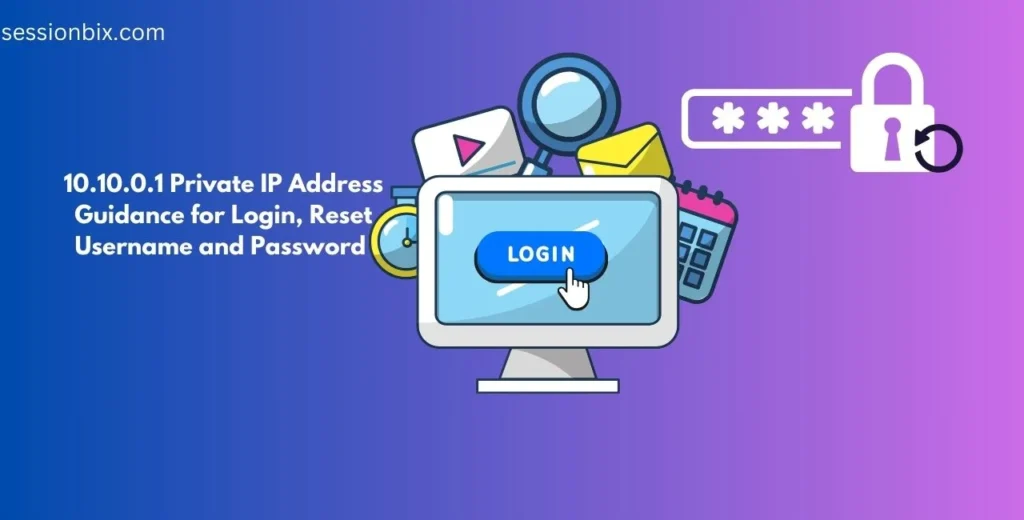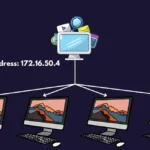In the realm of computer networks, understanding IP addresses is fundamental to managing and troubleshooting network systems. Among the private IP addresses, 10.10.0.1 is a notable example, often found within internal network configurations. This address, part of the broader 10.0.0.0 to 10.255.255.255 range, serves specific roles in network management and device configuration. This comprehensive article explores the significance of the IP address 10.10.0.1, its uses, types, and how to manage related network settings effectively.
Understand the IP Address 10.10.0.1
In the world of networking, IP addresses are crucial for identifying devices and managing communications within a network. The IP address 10.10.0.1 is a specific address used primarily within private networks. Understanding this address and its functions can be key to managing and troubleshooting network setups.
Information by IP Address 10.10.0.1
The IP address 10.10.0.1 is part of the private IP address range defined by the Internet Assigned Numbers Authority (IANA). Specifically, it falls within the 10.0.0.0 to 10.255.255.255 range, which is reserved for private use in local area networks (LANs). This range is not routable on the public internet, meaning it’s used only within the confines of a local network, such as a home or office network. Devices that use 10.10.0.1 can communicate with each other within the same network but require network address translation (NAT) to access external networks or the internet. This setup helps in conserving public IP addresses and enhances security by keeping internal network structures hidden from external entities.
Read Also: 172.16.50.4 IP Address | Unveiling The Bart Springtime And Diana Nyad’s Journey
What is a Private IP Address?
A private IP address is a specific type of IP address that is used within a private network rather than on the public internet. The main advantage of using private IP addresses is that they help in conserving the limited number of public IP addresses available. Private IP addresses are defined within specific ranges and are intended for use within a single network.
Private IP address ranges are:
- 10.0.0.0 to 10.255.255.255
- 172.16.0.0 to 172.31.255.255
- 192.168.0.0 to 192.168.255.255
These addresses can be used by multiple networks without conflict because they are not visible to devices outside the local network. This provides an added layer of security and flexibility for network management.
Read Also: Mastering 127.0.0.1:49342 A Guide for IP Address And Network Troubleshooting
Significance of Private IP Address 10.10.0.1
The significance of the private IP address 10.10.0.1 lies in its common use as a gateway address for local networks. This address is often assigned to network routers or other network devices that manage traffic within the LAN. Here’s why it is important:
- Gateway Role: Devices within the network use 10.10.0.1 as a gateway to communicate with each other and access the internet. It acts as the point of entry and exit for data traffic.
- Network Management: Administrators use the address 10.10.0.1 to access the router’s configuration interface. From here, they can manage network settings, security protocols, and connected devices.
- Network Segmentation: By using private IP addresses like 10.10.0.1, organizations can segment their networks into smaller, manageable sections without consuming public IP address space.
- Security: Since 10.10.0.1 is a private IP address, it’s not directly exposed to the public internet. This reduces the risk of external attacks on the router or other devices using this address.
Read Also: Pirate Proxy 2024: know all About Proxy Websites | 76ers vs Knicks Match Player Stats
How To Login to 10.0.0.1?
Logging into 10.0.0.1 is a common procedure for accessing router settings and managing network configurations. Here’s a step-by-step guide:
- Connect to the Network: Ensure your device is connected to the network of the router with the IP address 10.0.0.1. This can be done via a wired connection or Wi-Fi.
- Open a Web Browser: Launch a web browser like Chrome, Firefox, or Edge.
- Enter the IP Address: In the address bar, type
http://10.0.0.1and press Enter. This will direct you to the router’s login page. - Enter Login Credentials: You will be prompted to enter a username and password. The default credentials are often found in the router’s manual or on a sticker on the device itself. Common default usernames are “admin” and “user”, and the passwords might be “admin” or “password”. If these have been changed and you don’t know the current credentials, you might need to perform a reset.
- Access Router Settings: Once logged in, you can navigate through the router’s interface to configure settings such as network security, wireless options, and more.
How To Reset or Recover WiFi Username and Password?
If you’ve forgotten your WiFi username or password, here’s how you can recover or reset them:
- Access Router Settings: Connect to the router using a wired connection or by accessing it via http://10.0.0.1.
- Log In: Use the router’s admin credentials to log in.
- Navigate to Wireless Settings: Look for sections like “Wireless Settings” or “WiFi Settings”.
- Check for Username and Password: In the wireless settings section, you should find the current WiFi network name (SSID) and password.
- Reset Password: If needed, you can change the WiFi password to something new and save the settings. Ensure you update the password on all devices connected to your network.
Read Also: Pacers vs Milwaukee Bucks Match Player Stats | Bandera Roja (clima propicio para incendios)
How Can I Change Router IP Address?
Changing your router’s IP address can be necessary for various reasons, such as avoiding conflicts or improving network organization. Here’s how to do it:
- Log Into the Router: Follow the login steps outlined previously to access the router’s settings.
- Find IP Address Settings: Navigate to the section labeled “Network” or “LAN Settings”.
- Change IP Address: Locate the field where the router’s IP address is specified (e.g., 10.0.0.1). Enter the new IP address you wish to use, ensuring it falls within the correct private IP range and doesn’t conflict with other devices.
- Save Changes: Apply and save the new settings. Your router will usually reboot automatically.
- Reconnect Devices: After changing the IP address, you may need to reconnect your devices using the new address.
Read Also: Dallas Mavericks Vs Timberwolves Match Player Stats | www digitalnewsalerts.com
Conclusion
The IP address 10.10.0.1 is a private IP address commonly used as a gateway in local area networks. Understanding how to manage this address, log into network devices, and recover or change network settings is essential for maintaining a functional and secure network. Whether you’re a home user or a network administrator, knowing how to effectively work with private IP addresses can help ensure smooth and efficient network operations.



